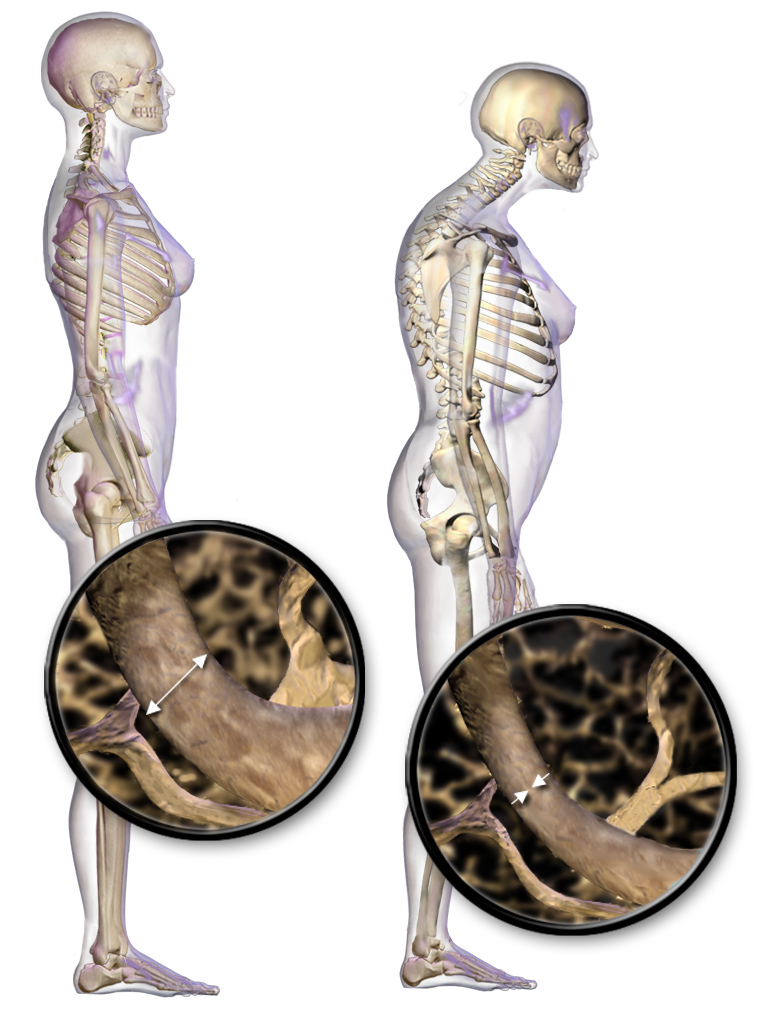|
Plasmacytoma
Plasmacytoma is a plasma cell dyscrasia in which a plasma cell tumour grows within soft tissue or within the axial skeleton. The International Myeloma Working Group lists three types: Plasma cell dyscrasia#Solitary plasmacytoma, solitary plasmacytoma of bone (SPB); extramedullary plasmacytoma (EP), and multiple plasmacytomas that are either primary or recurrent. The most common of these is SPB, accounting for 3–5% of all plasma cell malignancies. SPBs occur as lytic lesions within the axial skeleton and extramedullary plasmacytomas most often occur in the upper respiratory tract (85%), but can occur in any soft tissue. Approximately half of all cases produce paraproteinemia. SPBs and extramedullary plasmacytomas are mostly treated with radiotherapy, but surgery is used in some cases of extramedullary plasmacytoma. The skeletal forms frequently progress to multiple myeloma over the course of 2–4 years. Due to their cellular similarity, plasmacytomas have to be differentiated ... [...More Info...] [...Related Items...] OR: [Wikipedia] [Google] [Baidu] |
Multiple Myeloma
Multiple myeloma (MM), also known as plasma cell myeloma and simply myeloma, is a cancer of plasma cells, a type of white blood cell that normally produces antibody, antibodies. Often, no symptoms are noticed initially. As it progresses, bone pain, anemia, Kidney failure, renal insufficiency, and infections may occur. Complications may include hypercalcemia and amyloidosis. The cause of multiple myeloma is unknown. Risk factors include obesity, radiation exposure, family history, age and certain chemicals. There is an increased risk of multiple myeloma in certain occupations. This is due to the occupational exposure to aromatic hydrocarbon solvents having a role in causation of multiple myeloma. Multiple myeloma is the result of a multi-step malignant transformation, and almost universally originates from the pre-malignant stage monoclonal gammopathy of undetermined significance (MGUS). As MGUS evolves into MM, another pre-stage of the disease is reached, known as Smouldering ... [...More Info...] [...Related Items...] OR: [Wikipedia] [Google] [Baidu] |
Plasma Cell
Plasma cells, also called plasma B cells or effector B cells, are white blood cells that originate in the lymphoid organs as B cells and secrete large quantities of proteins called antibodies in response to being presented specific substances called antigens. These antibodies are transported from the plasma cells by the blood plasma and the lymphatic system to the site of the target antigen (foreign substance), where they initiate its neutralization or destruction. B cells differentiate into plasma cells that produce antibody molecules closely modeled after the receptors of the precursor B cell. Structure Plasma cells are large lymphocytes with abundant cytoplasm and a characteristic appearance on light microscopy. They have basophilic cytoplasm and an eccentric nucleus with heterochromatin in a characteristic cartwheel or clock face arrangement. Their cytoplasm also contains a pale zone that on electron microscopy contains an extensive Golgi apparatus and centrioles. Abundan ... [...More Info...] [...Related Items...] OR: [Wikipedia] [Google] [Baidu] |
Plasma Cell Dyscrasia
In hematology, plasma cell dyscrasias (also termed plasma cell disorders and plasma cell proliferative diseases) are a spectrum of progressively more severe monoclonal gammopathies in which a clone or multiple clones of pre-malignant or malignant plasma cells (sometimes in association with lymphoplasmacytoid cells or B lymphocytes) over-produce and secrete into the blood stream a myeloma protein, i.e. an abnormal monoclonal antibody or portion thereof. The exception to this rule is the disorder termed non-secretory multiple myeloma; this disorder is a form of plasma cell dyscrasia in which no myeloma protein is detected in serum or urine (at least as determined by conventional laboratory methods) of individuals who have clear evidence of an increase in clonal bone marrow plasma cells and/or evidence of clonal plasma cell-mediated tissue injury (e.g. plasmacytoma tumors). Here, a clone of plasma cells refers to group of plasma cells that are abnormal in that they have an id ... [...More Info...] [...Related Items...] OR: [Wikipedia] [Google] [Baidu] |
Paraproteinemia
Monoclonal gammopathy, also known as paraproteinemia, is the presence of excessive amounts of myeloma protein or monoclonal gamma globulin in the blood. It is usually due to an underlying immunoproliferative disorder or hematologic neoplasms, especially multiple myeloma. It is sometimes considered equivalent to plasma cell dyscrasia. The most common form of the disease is monoclonal gammopathy of undetermined significance. Causes Causes of paraproteinemia include the following: * Leukemias and lymphomas of various types, but usually B-cell non-Hodgkin lymphomas with a plasma cell component. ** Myeloma ** Plasmacytoma ** Lymphoplasmacytic lymphoma * Idiopathic disease, Idiopathic (no discernible cause): some of these will be revealed as leukemias or lymphomas over the years. ** AL amyloidosis Diagnosis These are characterized by the presence of any abnormal protein that is involved in the immune system, which are most often immunoglobulins and are associated with the clonal prol ... [...More Info...] [...Related Items...] OR: [Wikipedia] [Google] [Baidu] |
Micrograph
A micrograph is an image, captured photographically or digitally, taken through a microscope or similar device to show a magnify, magnified image of an object. This is opposed to a macrograph or photomacrograph, an image which is also taken on a microscope but is only slightly magnified, usually less than 10 times. Micrography is the practice or art of using microscopes to make photographs. A photographic micrograph is a photomicrograph, and one taken with an electron microscope is an electron micrograph. A micrograph contains extensive details of microstructure. A wealth of information can be obtained from a simple micrograph like behavior of the material under different conditions, the phases found in the system, failure analysis, grain size estimation, elemental analysis and so on. Micrographs are widely used in all fields of microscopy. Types Photomicrograph A light micrograph or photomicrograph is a micrograph prepared using an optical microscope, a process referred to ... [...More Info...] [...Related Items...] OR: [Wikipedia] [Google] [Baidu] |
Epistaxis
A nosebleed, also known as epistaxis, is an instance of bleeding from the nose. Blood can flow down into the stomach, and cause nausea and vomiting. In more severe cases, blood may come out of both nostrils. Rarely, bleeding may be so significant that low blood pressure occurs. Blood may also be forced to flow up and through the nasolacrimal duct and out of the eye, producing haemolacria, bloody tears. Risk factors include trauma, including putting the finger in the nose, anticoagulants, blood thinners, high blood pressure, alcoholism, seasonal allergies, dry weather, and inhaled corticosteroids. There are two types: anterior, which is more common; and posterior, which is less common but more serious. Anterior nosebleeds generally occur from Kiesselbach's plexus while posterior bleeds generally occur from the sphenopalatine artery or Woodruff's plexus. The diagnosis is by direct observation. Prevention may include the use of petroleum jelly in the nose. Initially, treatment is ... [...More Info...] [...Related Items...] OR: [Wikipedia] [Google] [Baidu] |
Rhinorrhoea
Rhinorrhea (American English), also spelled rhinorrhoea or rhinorrhœa (British English), or informally runny nose is the free discharge of a thin mucus fluid from the nose; it is an extremely common condition. It is a common symptom of allergies (hay fever) or certain viral infections, such as the common cold or COVID-19. Rhinorrhea varies in color and consistency depending upon the underlying cause. It can be a side effect of crying, exposure to cold temperatures, cocaine abuse, or drug withdrawal, such as from methadone or other opioids. Treatment for rhinorrhea may be aimed at reducing symptoms or treating underlying causes. Rhinorrhea usually resolves without intervention, but may require treatment by a doctor if symptoms last more than 10 days or if symptoms are the result of foreign bodies in the nose. The term rhinorrhea was coined in 1866 from the Greek ''rhino-'' ("of the nose") and ''-rhoia'' ("discharge" or "flow"). Signs and symptoms Rhinorrhea is characterized by ... [...More Info...] [...Related Items...] OR: [Wikipedia] [Google] [Baidu] |
Palpable
{{Short pages monitor ... [...More Info...] [...Related Items...] OR: [Wikipedia] [Google] [Baidu] |
Serum Protein Electrophoresis Normal And Paraprotein
Serum may refer to: Biology and pharmacology *Serum (blood), plasma from which the clotting proteins have been removed **Antiserum, blood serum with specific antibodies for passive immunity *Serous fluid, any clear bodily fluid Places * Serum, India Other uses * Gary Serum (born 1956), American baseball player *Serum, a software synthesizer VST created by Steve Duda Steve Duda is an American DJ, record producer, audio engineer, manager and software engineer from Menlo Park, California. He is best known for his mid-2000s collaborative electronic music projects with Canadian record producer and DJ Deadmau5 u ... See also * * * Sera (other) {{disambiguation, surname ... [...More Info...] [...Related Items...] OR: [Wikipedia] [Google] [Baidu] |
Serum Protein Electrophoresis
Serum protein electrophoresis (SPEP or SPE) is a laboratory test that examines specific proteins in the blood called globulins. The most common indications for a serum protein electrophoresis test are to diagnose or monitor multiple myeloma, a monoclonal gammopathy of uncertain significance (MGUS), or further investigate a discrepancy between a low albumin and a relatively high total protein. Unexplained bone pain, anemia, proteinuria, chronic kidney disease, and hypercalcemia are also signs of multiple myeloma, and indications for SPE. Blood must first be collected, usually into an airtight vial or syringe. Electrophoresis is a laboratory technique in which the blood serum (the fluid portion of the blood after the blood has clotted) is applied to either an acetate membrane soaked in a liquid buffer, or to a buffered agarose gel matrix, or into liquid in a capillary tube, and exposed to an electric current to separate the serum protein components into five major fract ... [...More Info...] [...Related Items...] OR: [Wikipedia] [Google] [Baidu] |
Pathological Fracture
A pathologic fracture is a bone fracture caused by weakness of the bone structure that leads to decrease mechanical resistance to normal mechanical loads. This process is most commonly due to osteoporosis, but may also be due to other pathologies such as cancer, infection (such as osteomyelitis), inherited bone disorders, or a bone cyst. Only a small number of conditions are commonly responsible for pathological fractures, including osteoporosis, osteomalacia, Paget's disease, Osteitis, osteogenesis imperfecta, benign bone tumours and cysts, secondary malignant bone tumours and primary malignant bone tumours. Fragility fracture is a type of pathologic fracture that occurs as a result of an injury that would be insufficient to cause fracture in a normal bone. There are three fracture sites said to be typical of fragility fractures: vertebral fractures, fractures of the neck of the femur, and Colles fracture of the wrist. This definition arises because a normal human being ought ... [...More Info...] [...Related Items...] OR: [Wikipedia] [Google] [Baidu] |






